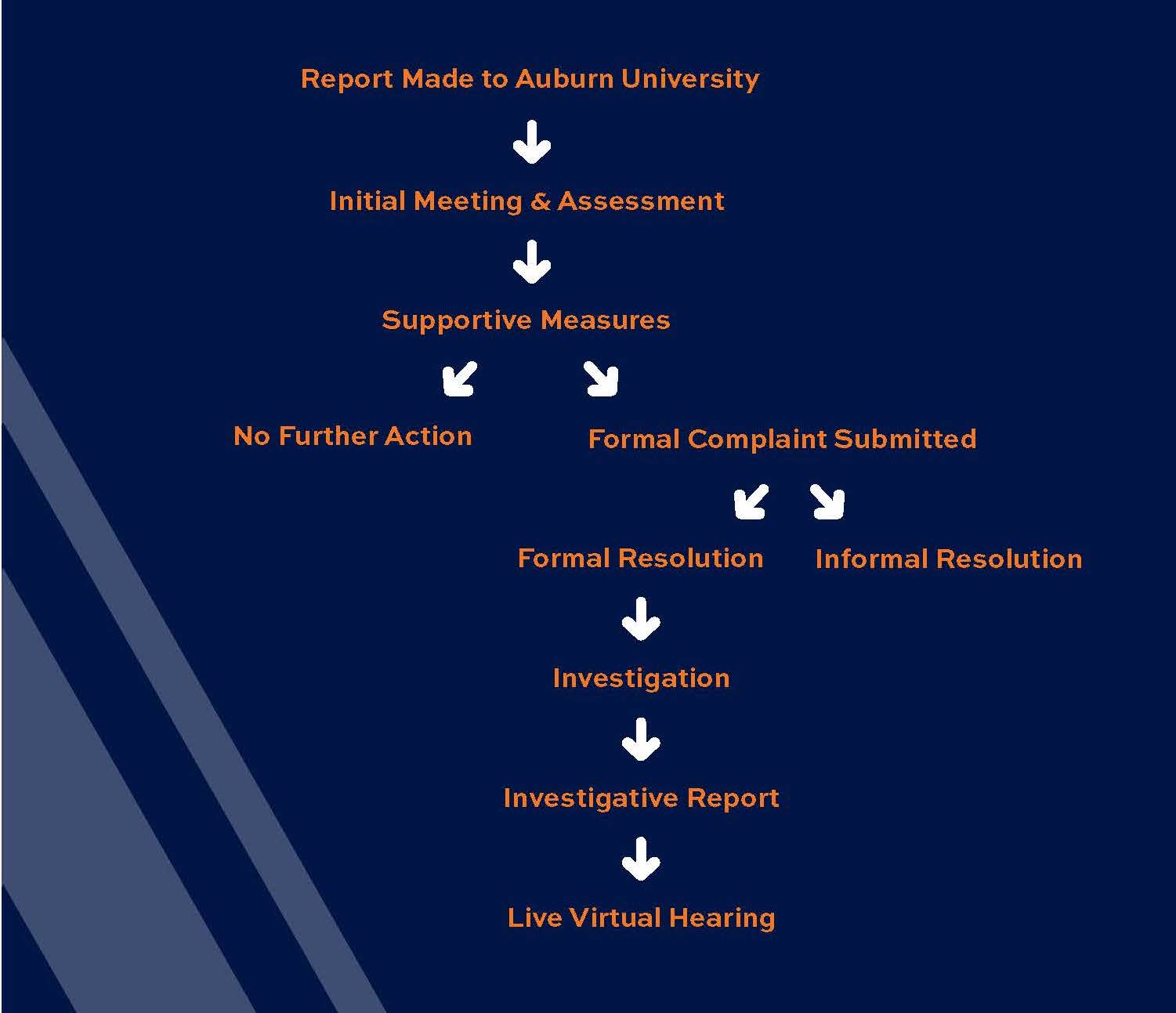The Title IX Process
The Title IX Process

-
Report made to Auburn University
An incident report is made to the Office of Equal Opportunity Compliance. The Office of Equal Opportunity Compliance will reach out to the complainant to offer supportive measures and resources and to meet to discuss the complainant's options.
-
Initial Meeting & Assessment
The Office of Equal Opportunity Compliance and the complainant meet to discuss questions about available resources and supportive measures and the Title IX policy and procedures.
-
Supportive Measures
Supportive measures will be offered to the complainant, whether or not a formal complaint is submitted.
-
No Further Action
If the complainant does not wish to file a formal complaint, or the alleged conduct does not fall under Auburn's Title IX Sexual Harassment Policy, no further action will be taken. (There are some circumstances where the Title IX Coordinator can file a complaint on behalf of Auburn University.)
-
Formal Complaint Submitted
The complainant submits a formal complaint for investigation. Both parties will receive a Notice of Investigation. A Title IX Investigator, sometimes with the support of a Co-Investigator, will be appointed to the case.
-
Informal Resolution
Usually after the investigation closes, but sometimes earlier in the process, the complainant and respondent may agree to resolve the complaint through an informal resolution facilitated by a neutral guide. The parties agree to terms, which may include counseling assessments, education, or other sanctions. The Title IX Coordinator approves the agreement and ensures that the parties complete the agreed upon sanctions. After an Informal Resolution agreement is signed by both parties, the matter is considered closed (pending completion of sanctions) and there is no right to an appeal.
-
Formal Resolution
This process includes a thorough, impartial investigation, a report, and a live hearing.
-
Investigation
The Investigator(s) will interview the parties and witnesses, as appropriate, and will collect evidence.
-
Investigative Report
The Investigator(s) will draft a Preliminary Report and provide the parties an opportunity to review and comment on it. The Investigator(s) will then submit a Final Investigative Report, including a copy of the relevant evidence collected. The Final Investigative Report will be shared with the parties, their advisors, the Title IX Coordinator, and the appointed Hearing Officer.
-
Live Virtual Hearing
A few days before the hearing, the Hearing Officer will hold a pre-hearing meeting with the parties, their advisors, and the Title IX Coordinator to review the format of the live hearing and generally what to expect. There might be some pre-hearing rulings on the parties’ objections to certain evidence or which witnesses will be called to testify.
During the live hearing, the Hearing Officer will hear direct testimony and cross-examination from the parties and pre-determined witnesses and will consider relevant evidence. The Hearing Officer will issue a written report and determine whether, by a preponderance of the evidence, the Title IX Sexual Harassment Policy has been violated. If the Hearing Officer determines the Policy has been violated, the Hearing Officer will also issue sanctions. Either party may appeal the final determination.



